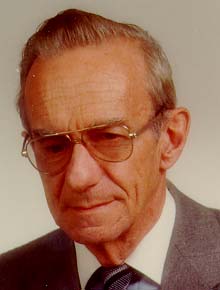CJTF-FM, Trois-Pistoles
CIRL-FM-4 Radio CJFP Ltee.
| Station | Year | Freq. | Power | Owner/Info |
|---|---|---|---|---|
| CJTF-FM | 2001 | 93.9 | 27 | CIRL-FM-4 Radio CJFP Ltee. |
| CJTF-FM | 1985 | 93.9 | 27 | Radio CFJP Ltee. |
1985
On January 8, Radio CJFP Ltee was given approval to operate a new FM transmitter at Trois-Pistoles. It would operate on 93.9 MHz with effective radiated power of 27 watts. The new transmitter would broadcast part-time from studios in Trois-Pistoles and part-time from CJFP (rebroadcast). A competing application by Radio Degelis Inc. (CFVD) was denied. CJFP already had a studio in Trois-Pistoles. CJFP’s AM signal at Trois-Pistoles was good during the day but not at night. This was the main reason behind the request for the rebroadcaster. Undated CJTF-FM Trois-Pistoles signed on the air.
1987

On September 24, Radio CJFP (1986) Ltée received authority to acquire CJFP Rivière-du-Loup and its rebroadcasters CJAF Cabano and CHRT Pohénégamook from Radio CJFP Ltée. The transfer did not involve a change in effective control. Luc Simard, who held the control of Radio CJFP Ltée, became the only shareholder of the new licensee company, Radio CJFP (1986) Ltée. In a separate decision, Radio CJFP (1986) Ltee. was also allowed to acquire CJTF-FM Trois-Pistoles. On December 11, Radio CJFP Ltée’s application to rebroadcast CKAC Montreal during specified hours over CJFP, CJAF, CHRT and CJTF-FM was denied. It had hoped to rebroadcast the CKAC programming between 6:05 p.m. and 10:00 p.m. Monday to Friday and between 6:07 p.m. and 8:00 p.m. on Sunday. In turning down the application, the CRTC noted these stations already rebroadcast, in part, the programming of the Radio-Canada network.
1990
On February 21, CJTF-FM Trois-Pistoles was authorized to return to full-time simulcasting of CJFP.
1993
On June 23, CJFP and its rebroadcasters received approval to disaffiliate from Radio-Canada.
1994
On September 13, CJFP was given approval to convert to the FM band. The new station would operate at Rivière-du-Loup on 103.7 MHz with an effective radiated power of 60,000 watts. An associated transmitter at Pointe-de-Rivière-du-Loup would operate on 93.9 MHz with an effective radiated power of 13.3 watts. Existing transmitters CJAF Cabano and CJTF-FM Trois-Pistoles would continue to operate. CJFP-AM Rivière-du-Loup and CHRT Pohénégamook would cease to operate. CJFP-FM began operations on December 15, replacing CJFP-AM.
1997
On March 25, Radio CJFP (1986) ltée received a new licence for its Trois-Pistoles transmitter (93.9 MHz with effective radiated power of 229 watts). The CRTC noted that Radio CJFP already operated CJTF-FM Trois-Pistoles which fully rebroadcast the programs of CJFP-FM Rivière-du-Loup. Under the new license, CJFP committed to produce and broadcast no less than 10 hours of local programming per week (at Trois-Pistoles). The station would still broadcast 116 hours of programming per week from CJFP-FM. CJTF-FM became CJFP-FM-4.
1998
On December 18, CJFP-FM-4 Trois-Pistoles was granted a power decrease from 229 watts to 42 watts.
2001
CJFP-FM became CIEL-FM (CJTF-FM-4 became CIEL-FM-4).
2010
On June 30, the CRTC renewed the broadcasting licence for the French-language commercial radio station CIEL-FM-4 Trois-Pistoles from 1 July 2010 to 31 August 2013. This short-term licence renewal will enable the Commission to review, at an earlier date, the licensee’s compliance with the Radio Regulations, 1986. In Broadcasting Notice of Consultation 2009-786, the Commission stated that the licensee may have failed to comply with section 9(2) of the Regulations, which relates to the provision of annual returns, for the 2002 and 2003 broadcast years. However, the Commission notes that the licensee is in compliance with its filing of those annual returns.
The story continues elsewhere…
Effective September 1st 2019, we will only be adding new material to these station histories in exceptional circumstances. Our intent to chronicle the early days of these radio and television stations has been achieved, and many new sources and technologies, from the CRTC website to Wikipedia, and others, are now regularly providing new information in these areas.
